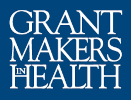The Final Reconciliation Package: Implementation of Key Provisions
On July 4, 2025, H.R. 1, the One Big Beautiful Bill Act, was signed into law. The implementation dates for key health care provisions in the law vary, with some taking effect immediately upon passage and others being implemented over several years. This resource details key dates for the implementation of the law’s most significant health care provisions.
Deadlines in Health-Related Executive Orders and Presidential Memoranda
This GIH policy resource details many of the health-related executive orders issued by the administration and includes a calendar of upcoming implementation deadlines.
Beyond the Exam Room: Impacting Health Outcomes Through Civic Engagement
August marks Civic Health Month, a time to showcase the link between voting and health and celebrate efforts that ensure every voter can support their community’s health at the ballot box. At the same time, the United States is grappling with a health care system ranked 37th globally despite consuming 17 percent of the country’s GDP. With 26 million Americans uninsured and 43 million underinsured, the gap in access to care continues to widen. This crisis will deepen as critical ACA subsidies expire at the end of 2025, potentially leaving 3.8 million more Americans without coverage, in addition to new federal cuts to Medicaid and changes to how coverage is accessed through the health insurance marketplace, which could result in as many as 20 million Americans losing their health insurance.
Osula Rushing Named GIH Vice President for Program and Strategy
Osula Evadne Rushing has been named Grantmakers In Health’s (GIH) vice president for program and strategy. In her new role, she will support program development and strategic positioning of the organization, as well as oversee and supervise program staff, and cultivate external relations and new ventures.
Seismic Shifts Beyond Foundation Walls Compel Changes Within
What is a foundation to do when its mission to improve and transform health and well-being is threatened by persistent economic challenges and growing community needs? For Saint Luke’s Foundation of Cleveland, the answer lay in three words: rethink, redesign, and reinvent.
James Kimmey Selected 2013 Terrance Keenan Award Recipient
James R. Kimmey, MD, MPH, former founding president and CEO of the Missouri Foundation for Health, has been selected the 2013 recipient of GIH’s Terrance Keenan Leadership Award in Health Philanthropy.
Coming Soon? The Ongoing Effort to Promote Better Depression Services in Primary Care
Depression is one of the most common disabling and debilitating health conditions in the United States and internationally. To ensure better depression care for older patients, The John A. Hartford Foundation has advocated for the Improving Mood–Promoting Access to Collaborative Treatment (IMPACT) model as the standard approach to the delivery of mental health services in primary care.




